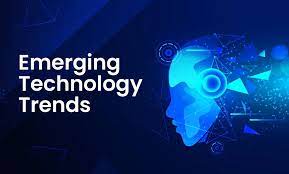
Current Technology Trends: Driving Innovation currently and Beyond
Technology is evolving at an unprecedented pace, reshaping how we live, work, and interact. Staying ahead of these trends is not just about innovation; it’s about survival in a highly competitive and interconnected world. Let’s explore the top current technology trends dominating current year, their benefits, applications, and the transformative impact they bring.
1. Artificial Intelligence (AI) and Machine Learning (ML)
AI and ML continue to lead the charge in technological advancements, enabling smarter, data-driven solutions across various sectors.
Features:
- Predictive analytics for data-driven decisions.
- Natural language processing (NLP) for understanding human language.
- Autonomous systems, such as robots and self-driving cars.
Benefits:
- Automates repetitive tasks, freeing human resources for creative endeavours.
- Enhances customer experience through chatbots and personalization.
- Provides insights from vast datasets, improving strategic planning.
Examples:
- Healthcare: AI algorithms assisting in early disease detection.
- Retail: ML models predicting consumer behaviour for personalized marketing.
- Entertainment: AI-generated content recommendations on platforms like Netflix.
2. 5G Technology
The rollout of 5G is revolutionizing connectivity, enabling faster speeds and ultra-low latency.
Features:
- Speed up to 100 times faster than 4G.
- Supports up to 1 million connected devices per square kilometre.
- Enhanced reliability for real-time communication.
Benefits:
- Facilitates real-time applications like remote surgery.
- Boosts IoT capabilities, creating smart ecosystems.
- Enhances AR/VR experiences for gaming and training.
Examples:
- Autonomous Vehicles: Real-time data exchange for navigation.
- Smart Cities: Efficient traffic management and energy usage.
- Manufacturing: Remote monitoring and automation of production lines.
3. Internet of Things (IoT)
IoT connects devices, enabling seamless communication and smarter systems.
Features:
- Sensors collecting and transmitting data in real time.
- Cloud integration for centralized data analysis.
- Interoperability across devices and platforms.
Benefits:
- Enhances home automation with smart devices.
- Improves efficiency in industrial processes through predictive maintenance.
- Enables personalized healthcare through wearable devices.
Examples:
- Consumer: Smart thermostats like Nest optimizing energy consumption.
- Healthcare: IoT-enabled wearable devices monitoring vital signs.
- Agriculture: IoT sensors monitoring soil moisture for precision farming.
4. Blockchain Technology
Blockchain’s potential goes beyond cryptocurrencies, ensuring secure and transparent transactions across industries.
Features:
- Decentralized and immutable ledger.
- Smart contracts for automated, trust less transactions.
- High-level encryption ensuring security.
Benefits:
- Enhances transparency and reduces fraud in supply chains.
- Facilitates secure peer-to-peer transactions.
- Empowers secure and anonymous voting systems.
Examples:
- Finance: Cryptocurrencies like Bitcoin and Ethereum for decentralized payments.
- Healthcare: Blockchain for secure patient data sharing.
- Logistics: Tracking goods in real time, ensuring authenticity.
5. Augmented Reality (AR) and Virtual Reality (VR)
AR and VR are creating immersive experiences, transforming entertainment, education, and beyond.
Features:
- 3D simulations for realistic interactions.
- AR overlays enhancing real-world views.
- VR headsets providing fully immersive experiences.
Benefits:
- Revolutionizes training with virtual simulations.
- Enhances shopping experiences with virtual try-ons.
- Improves remote collaboration through virtual meetings.
Examples:
- Retail: IKEA Place app allowing users to visualize furniture in their homes.
- Education: VR-based learning modules for medical students.
- Gaming: Immersive VR games like Beat Saber.
6. Cloud Computing
Cloud technology remains integral to digital transformation, offering scalable solutions for businesses.
Features:
- On-demand access to computing resources.
- Pay-as-you-go pricing models.
- Seamless integration with existing systems.
Benefits:
- Reduces infrastructure costs.
- Enables remote work and collaboration.
- Enhances data security and backup solutions.
Examples:
- Start-ups: Utilizing Amazon Web Services (AWS) for scalable growth.
- Corporations: Microsoft Azure supporting hybrid cloud deployments.
- Education: Google Workspace enabling virtual classrooms.
7. Cybersecurity Advancements
As threats evolve, so do cybersecurity measures, ensuring protection in the digital era.
Features:
- AI-driven threat detection and response.
- Advanced encryption protocols.
- Biometric authentication for enhanced security.
Benefits:
- Safeguards sensitive data from breaches.
- Builds trust among customers and partners.
- Prevents financial losses due to cyberattacks.
Examples:
- Businesses: AI-based security tools like Darktrace for proactive threat management.
- Individuals: Multi-factor authentication for securing personal accounts.
- Healthcare: Securing patient data against ransomware attacks.
8. Sustainable Tech Solutions
Sustainability in technology is becoming a priority as the world focuses on reducing its carbon footprint.
Features:
- Energy-efficient designs and processes.
- Renewable energy integration.
- Recycling and circular economy initiatives.
Benefits:
- Reduces environmental impact.
- Promotes long-term economic sustainability.
- Aligns businesses with global sustainability goals.
Examples:
- Energy: Tesla’s advancements in battery technology.
- Consumer Electronics: Apple’s commitment to 100% recycled materials.
- Construction: Green building materials reducing energy consumption.
9. Edge Computing
Edge computing processes data closer to its source, enhancing speed and efficiency.
Features:
- Reduces reliance on centralized data centres.
- Real-time processing capabilities.
- Compatible with IoT and 5G technologies.
Benefits:
- Lowers latency for time-sensitive applications.
- Reduces bandwidth usage.
- Enables real-time analytics for better decision-making.
Examples:
- Healthcare: Wearable devices providing instant health updates.
- Manufacturing: Smart factories optimizing production in real time.
- Retail: Localized data processing for personalized customer experiences.
10. Quantum Computing
Quantum computing promises to solve problems beyond the reach of traditional computers.
Features:
- Leverages quantum bits (qubits) for complex computations.
- Solves problems in parallel rather than sequentially.
- Uses principles of superposition and entanglement.
Benefits:
- Accelerates research in fields like drug discovery.
- Optimizes logistics and financial modelling.
- Enhances cybersecurity through quantum encryption.
Examples:
- Pharma: Quantum simulations identifying new drug compounds.
- Finance: Quantum algorithms improving portfolio optimization.
- Technology: Google’s Sycamore achieving quantum supremacy.
The Benefits of Staying Updated with Current Technology Trends
- Enhanced Productivity: Leveraging automation and real-time analytics.
- Competitive Advantage: Early adoption ensures a lead in the market.
- Cost Savings: Efficient processes and sustainable practices reduce expenses.
- Better Customer Engagement: Personalized experiences drive loyalty.
The Challenges of Keeping Up with Current Technology Trends
While exciting, adopting current technologies trends can present challenges:
- High Initial Costs: Investment in new tools and training.
- Skill Gaps: Workforce needs to adapt to emerging technologies.
- Security Concerns: New tech often introduces unique vulnerabilities.
- Regulatory Hurdles: Compliance with evolving laws and standards.
Future Prospects and Trends
The future of current technology trends is as promising as it is unpredictable. Here are some areas to watch:
- AI Ethics: Ensuring AI benefits society responsibly.
- Decentralized Internet: Moving towards Web 3.0.
- Green Tech Innovations: Scaling up renewable energy solutions.
- Human-Machine Collaboration: Combining human creativity with machine precision.
Conclusion
In a world where current technology trends evolves at lightning speed, staying updated on current trends is crucial for businesses and individuals alike. From the transformative power of AI to the connectivity revolution brought by 5G and IoT, these trends redefine possibilities. Embracing these advancements not only drives innovation but also ensures relevance in an increasingly digital world. By navigating challenges and capitalizing on opportunities, we can harness the full potential of current technology trends to shape a smarter, more connected future.



